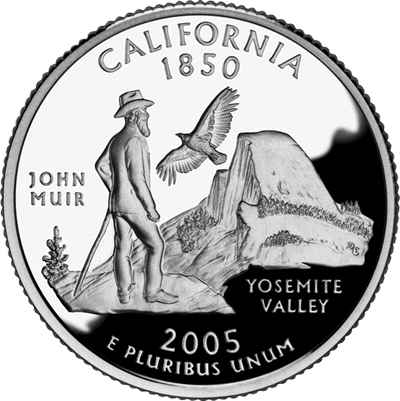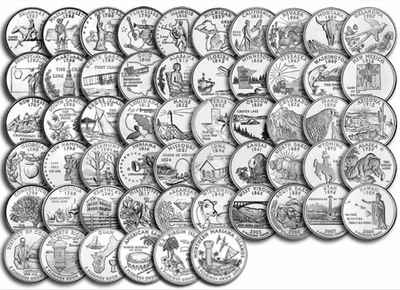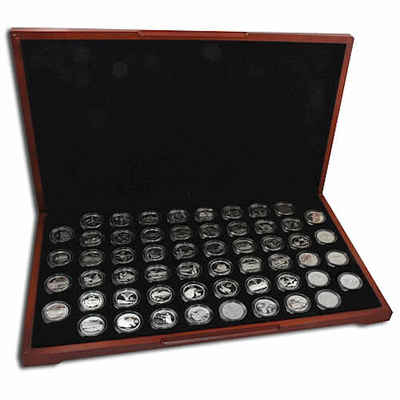
California Symbols
California 50 State Quarter
50 State Quarter of California

Designed by Don Everhart
Released January 31, 2005.
California, a western US state, stretches from the Mexican border along the Pacific for nearly 900 miles. Congress hesitated to welcome a new free state, but because of its booming population and the discovery of gold California was admitted in September 9, 1850. Ceded by Mexico by the Treaty of Guadalupe-Hidalgo, concluded Feb. 2, 1848, and proclaimed July 4, 1848. From then until statehood, California had a military government until Dec. 20, 1849, and then a local civil government. It never had a territorial form of government.
Mintage: 520,400,000
The first quarter released in 2005 honors California, and is the 31st in the United States Mint's 50 State Quarters® Program. The 50 State Quarter of California was released on January 31, 2005 and featured naturalist and conservationist John Muir, Yosemite Valley's monolithic granite headwall known as "Half Dome," and a California condor. Muir dedicated his life to conservation and preservation of the Western forests and was influential in establishing both Yosemite and Sequoia National Parks. He founded the Sierra Club and served as that organization's President until his death in 1914. Inscriptions: John Muir and Yosemite Valley.
California 50 State Quarter
The first quarter released in 2005 honors California, and is the 31st in the United States Mint's 50 State Quarters® Program. California was admitted into the Union on September 9, 1850, becoming our Nation's 31st State. Nicknamed the "Golden State," California's quarter depicts naturalist and conservationist John Muir admiring Yosemite Valley's monolithic granite headwall known as "Half Dome" and also contains a soaring California condor. The coin bears the inscriptions "California," "John Muir," "Yosemite Valley" and "1850."
In 1849, the year before California gained statehood, the family of 11-year-old John Muir emigrated from Scotland to the United States, settling in Wisconsin. In 1868, at the age of 30, Muir sailed up the West Coast and landed in San Francisco. He made his home in the Yosemite Valley, describing the Sierra Nevada Mountains as "the Range of Light... the most divinely beautiful of all the mountain chains I have seen." He devoted the rest of his life to the conservation of natural beauty, publishing more than 300 articles and 10 books that expanded his naturalist philosophy.
In 1890, Congress established Yosemite National Park, and in 1892 John Muir helped form the Sierra Club to protect it, serving as that organization's President until his death in 1914.
The California condor, with a wingspan as long as nine feet, is also featured on the coin in a tribute to the successful repopulation of the once nearly extinct bird.
The 20-member California State Quarter Commission was formed to solicit design concepts from California citizens and to review all submissions. The Commission forwarded 20 design concepts to Governor Gray Davis's office for further consideration. From these, five were chosen as finalists and sent for final review to the United States Mint. Governor Arnold Schwarzenegger chose the final selection from this group of five. The four other design concepts considered included "Waves and View all the 50 State Quarters Products Sun," "Gold Miner," "Golden Gate Bridge," and the "Giant Sequoia" design. The Department of Treasury approved the "John Muir/Yosemite Valley" design on April 15, 2004.
Source: United States Mint's 50 State Quarters Program







